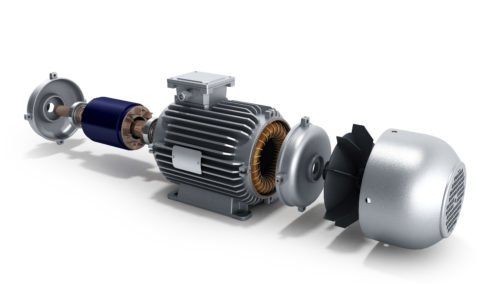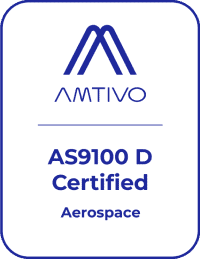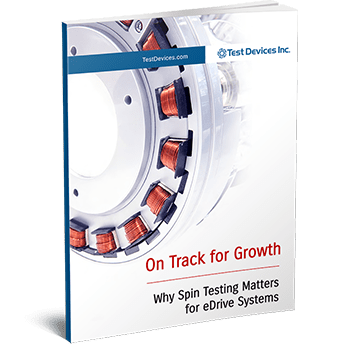Spin Testing for eDrive Components
Leave a CommentPropelled by political, technological, and economic factors, growing global demand for electric vehicles (EV) has accelerated the pace of development of eDrive systems. Automotive part suppliers are developing an increasing number of sizes and varieties of eDrive systems to meet the rising number of EV models offered by all major automotive manufacturers across the international market. This development and validation of reliable electric motors is a critical part of the eDrive system.
Offering a full range of spin testing services (outlined below) to meet clients’ developmental testing needs, Test Devices is an integral partner to our eDrive spin testing customers.
As part of a developmental test program for a major eDrive manufacturer, we recently concluded 50,000+ heated cycles on a series of electric motor rotors in an effort to verify cyclic fatigue life. In addition to cyclic fatigue testing, the test program also involved a series of overspeed and burst tests to validate structural integrity.
Spin Testing from Test Devices, Inc.
With an eye on quality services and constant innovation across everything we do, our Test Devices team consistently strives to provide timely and efficient services to better meet our customers’ needs. An industry-leading provider of spin testing and balancing services, we look forward to working with customers developing eDrive systems.
For more information on our eDrive spin testing services, or to discuss how we can help with your specific testing needs, contact the team today. We’re on hand to answer any questions you may have.
TDI On Track for Growth in eDrive Spin Testing Systems
Leave a CommentAs the race for improved electric drives for electric vehicles, drones, and hybrid drive/propulsion systems accelerates, the need for testing of rotors used in high-speed electric motors is also on track for growth.
Test Devices Inc. (TDI) is pleased to begin offering detailed rotor growth testing as well as a variety of other types of spin tests and expert services to aid in the accelerated development of your high-speed eDrive motors.
Why Spin Test with Test Devices Inc?

In tandem with detailed rotor growth testing, additional spin test options and expert support may also assist in the development of your high-speed motors:
- Detailed rotor growth mapping
This advanced growth measurement technique developed by Schenck is now available at TDI. This method maps the detailed contour of high-speed rotors, accurately capturing variations in a rotor’s geometry as it deforms under spinning conditions. See Figure-1 above for an example.
- Burst test and high-speed video imaging
These tests enhance understanding of the failure limit and failure mode of the rotor. Accurate growth measurement and high-speed video data helps engineers calculate the structural stability of the rotor and its failure mode.
- Fatigue, LCF test (with RT-CDS and growth mapping)
Fatigue and Low Cycle Fatigue (LCF) tests are useful in studying operational cycle fatigue and rotor durability. TDI’s proprietary Real-Time Crack Detection System (RT-CDS) immediately detects fatigue cracks as they happen and halts the test to preserve the damaged rotor before it disintegrates. RT-CDS enables customers to know the exact location and timing of fatigue damage, alleviating the need for painstaking failure investigation work.
- Heated spin test
Thermal management is one of the key concerns in high-speed motor designs. Operating temperature affects material strength as well as the size of the air gap necessary for cooling airflow and accommodating rotor growth due to thermal expansion. Depending on the materials used to construct the rotors, their behavior may vary dramatically when operated at room temperature versus an elevated temperature.
- Imbalance budgeting
TDI offers an expert design analysis service to estimate the range of imbalance levels presented by a given rotor design. This process involves analyzing the effect of the geometric tolerances of a given part and then estimating the influence on the imbalance of the rotor using a mathematical model to simulate the manufacturing process, while also comparing it to more than 10,000 different combinations of tolerance variations. The output from this analysis provides a probability model of the imbalance in the rotor, which can then be used to tune the design, minimize scatter, and avoid surprises at later stages of your fabrication processes.
Learn More
The recent merger of Test Devices Inc. (TDI) and Schenck Corporation combines the expertise of two of the most advanced leaders in spin testing, balancing, and high-speed rotor engineering. Download our eBook to learn more about why spin testing matters for eDrive systems.
To learn how our spin tests and other services can help your R&D efforts, prototyping, or manufacturing operation, contact us or request a quote.
TDI Expanding Balancing Services with New Schenck Machine
Leave a CommentFor the past four decades, Test Devices Inc. has provided our customers with an extensive range of rotational services, including balancing troubleshooting, diagnostics, and calibration. In an effort to meet growing consumer demands and reinforce our commitment to providing the best and most accurate rotor balancing services, we are expanding our balancing capabilities by acquiring a new HM 20 Schenck Horizontal Balancing Machine to support our existing fleet of equipment.
This state-of-the-art machine represents the latest in rotor balancing technology. One of the main benefits of the HM 20 is its hard mounted bearing design, which ensures rapid changeovers between rotors. This feature gives us the ability to handle significantly higher volumes of balancing jobs and increase the efficiency of our operational capabilities.
Additionally, the HM 20 is easily modifiable due to its modular design. A wide range of components and attachments can be added to the unit, increasing its flexibility and allowing us to meet the unique demands of customers regardless of industry or application.
Why Balancing Matters
Rotor balancing is essential to ensure the even distribution of mass in rotating components. Unbalance due to eccentricities between the center of gravity of the rotor and the axis of rotation causes the heavier side of the rotor to exert more centrifugal load. The unbalance in the rotor ultimately leads to excessive noise, vibration, wear, and significantly reduced service life. In some applications, unbalanced rotors are even considered to be a safety hazard if machinery failure can result in personal injury or property damage.
Balancing Services at TDI

Our services also include the design and manufacture of customized balance tooling for the production of unique and precisely balanced components.
Our staff of highly qualified and experienced industry experts, engineers, technicians, and consultants have provided rotary and balancing solutions in hundreds of challenging applications for many world-renowned clients. As a partner to Schenck, the experts in balancing, we are able to leverage their advanced technology and knowledge base with specific expertise and software support focused on the requirements most important to the aerospace industry. We also work closely with our customers, analyzing each specific case to determine the best methods and strategies for balancing.
Learn More
Proper balancing of rotors and other rotating components are essential to ensuring the efficiency, longevity, and safety of your machinery or equipment. Furthermore, balancing can have the added benefit of reduced maintenance, which can eliminate the costs associated with frequent repairs and part replacement.
Although the diagnosis of an imbalanced part is relatively simple, careful selection of a balancing service provider is crucial to guarantee optimum results. At Test Devices Inc., our technical staff have seen it all and are willing to assist you with your balancing needs.
If you would like to learn more about the risks of improper balancing and how you can avoid them, download our comprehensive eBook, Balancing 101, or contact our team today.








